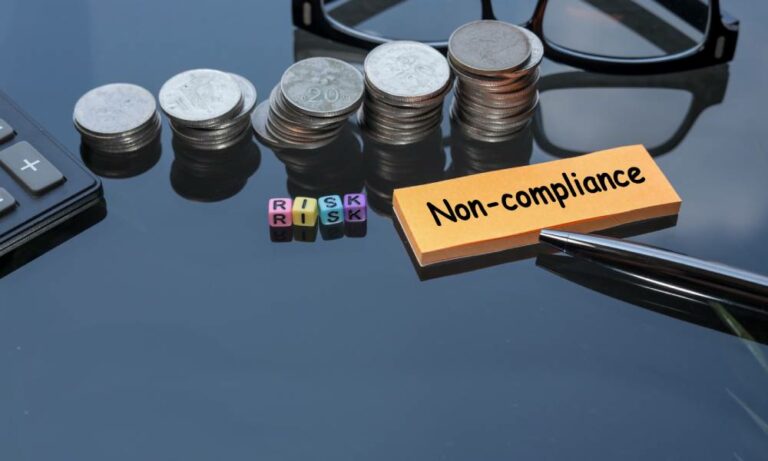Your ISN® rating isn’t just a number. It’s a reflection of your professionalism, reliability, and expertise. Understanding and improving this rating is crucial to your success as a contractor or supplier. We’ll break down the eight factors that determine your ISN® rating and what to know.
Introduction to ISNetworld and Its Significance for Contractors and Suppliers
ISNetworld is a global leader in contractor and supplier management, connecting organizations with reliable and compliant partners. Being part of ISNetworld means adhering to rigorous safety and compliance standards. The ISN® Rating is a critical metric hiring managers use to evaluate and select contractors and suppliers based on their safety performance and regulatory compliance.
Being well-versed in ISNetworld’s requirements helps businesses stay competitive in an industry that prioritizes safety. Your ISN® Rating can make or break your chances of winning bids and securing new business opportunities, whether you’re a contractor or a supplier.

Key Factors Determining Your ISN® Rating
The ISN® Rating considers various factors, including incident rates, safety programs, health management systems, and more. Understanding these factors and how they affect your rating is essential for maintaining a positive standing in the ISNetworld network.
1. Company Information Accuracy
Accurate and up-to-date company information is the foundation of a strong ISN® Rating. This information should include details about your business structure, locations, and contacts. Mistakes or outdated information can lead to discrepancies in your rating, potentially harming your reputation.
Investing time in accurate record-keeping and communication demonstrates your commitment to transparency and reliability, positively impacting your ISN® Rating. Regularly review your company details to ensure everything is current. Ensure that all information provided to ISNetworld is precise and that you regularly update it to reflect any changes. Consider designating a team member to continually manage and update your ISNetworld profile.
2. Documented Safety Programs
ISN safety programs are crucial in determining your rating. These programs outline your company’s approach to managing risks and ensuring a safe working environment. Comprehensive safety programs should cover hazard identification, risk assessment, emergency response, and incident reporting.
Having well-documented safety programs boosts your rating and enhances your overall safety culture. Regularly review and update your safety programs to incorporate industry best practices and evolving regulations. Engage your employees in safety training and awareness programs to ensure everyone understands and follows your safety protocols. A proactive approach to safety can significantly improve your ISN® Rating.
3. Incident Rates and Experience Modification Rates
Incident rates and experience modification rates (EMR) are critical metrics that reflect your company’s safety performance. These rates measure the frequency and severity of workplace incidents, including injuries and illnesses. Low incident rates and favorable EMR scores indicate a strong commitment to safety.
Implement robust safety procedures and encourage a culture of reporting and learning from near-misses to maintain low incident rates. Conduct regular safety audits and inspections to identify and mitigate potential hazards. Analyze incident data to identify trends and areas for improvement. Addressing root causes and implementing preventive measures can reduce incident rates and enhance your ISN® Rating.
4. Health and Safety Management Systems
Health and safety management systems (HSMS) are frameworks that help organizations manage and improve their safety performance. These systems encompass policies, procedures, and practices designed to prevent workplace accidents and ensure compliance with regulations.
Implementing an effective HSMS demonstrates your commitment to safety and can positively impact your ISN® Rating. Key components of an HSMS include risk assessments, safety training, incident investigation, and continuous improvement processes. Regularly review and update your HSMS to reflect changes in regulations and industry standards. Engage employees at all levels in safety initiatives to foster a culture of shared responsibility and accountability.
5. Recordable Incidents and Lost Time Incidents
Recordable incidents and lost time incidents (LTI) are significant factors in assessing your safety performance. Recordable incidents are workplace injuries or illnesses that require medical treatment beyond first aid. LTIs refer to incidents that result in employees missing work.
Monitoring and minimizing recordable incidents and LTIs is crucial for maintaining a positive ISN® Rating. Implement robust incident reporting and investigation procedures to identify root causes and prevent recurrence. Provide comprehensive training to employees on safe work practices and emergency response. Encourage a proactive approach to safety by recognizing and rewarding safe behaviors and practices.
6. Training and Qualifications
Proper training and qualifications are essential for ensuring employees can perform their tasks safely and competently. This factor includes job-specific training, safety certifications, and ongoing professional development. Maintaining a well-trained workforce increases your ISN® Rating.
Develop a comprehensive training program that covers general safety topics and job-specific requirements. Regularly assess training effectiveness and update programs to address emerging risks and industry changes. Investing in continuous learning and development reinforces your commitment to safety and excellence.
7. Regulatory, Environmental, and Sustainability Compliance
Compliance with regulatory, environmental, and sustainability standards is another key factor in determining your ISN® Rating. These standards include adherence to local, state, and federal regulations, as well as industry-specific requirements. Stay informed about relevant regulations and ensure your company policies and practices align with them.
Implement environmental and sustainability initiatives to reduce your ecological footprint and demonstrate corporate responsibility. Regularly audit your compliance efforts to identify and address any gaps. Proactively manage regulatory and environmental compliance to enhance your rating and build trust with clients.
8. Management Review and Continuous Improvement
Management review and continuous improvement processes are vital for maintaining and enhancing your ISN® Rating. Regularly reviewing your safety performance and implementing corrective actions demonstrate a commitment to excellence.
Establish a formal management review process that includes analyzing safety data, evaluating the effectiveness of safety programs, and setting improvement goals. Engage leadership in safety initiatives to drive a culture of continuous improvement. By fostering a culture of continuous improvement, you can achieve sustained safety excellence and positively impact your rating.

How Contractors and Suppliers Can Improve Their Ratings
CMS offers valuable tools and resources to help contractors and suppliers improve their ISN® Rating:
- Resources: We provide a wealth of resources, including safety program templates, training modules, and compliance checklists. Use these resources to develop and enhance your safety initiatives.
- Support: We offer dedicated support to help contractors and suppliers navigate the platform and improve their ISN® Rating. Reach out to us for assistance with documentation, compliance, and safety program development.
- Monitoring and reviewing performance: Regularly monitor and review your safety performance using our tools and metrics. Identify areas for improvement and implement corrective actions to enhance your ISN® Rating.
Leverage these resources to enhance your safety performance and demonstrate your commitment to excellence.
Stand Out to Potential Clients
A high ISN® Rating is essential for contractors and suppliers seeking to secure contracts and demonstrate their commitment to safety and compliance. By understanding what to know about these eight key factors that determine your ISN® rating and implementing best practices, you can enhance your safety performance and stand out to potential clients.






